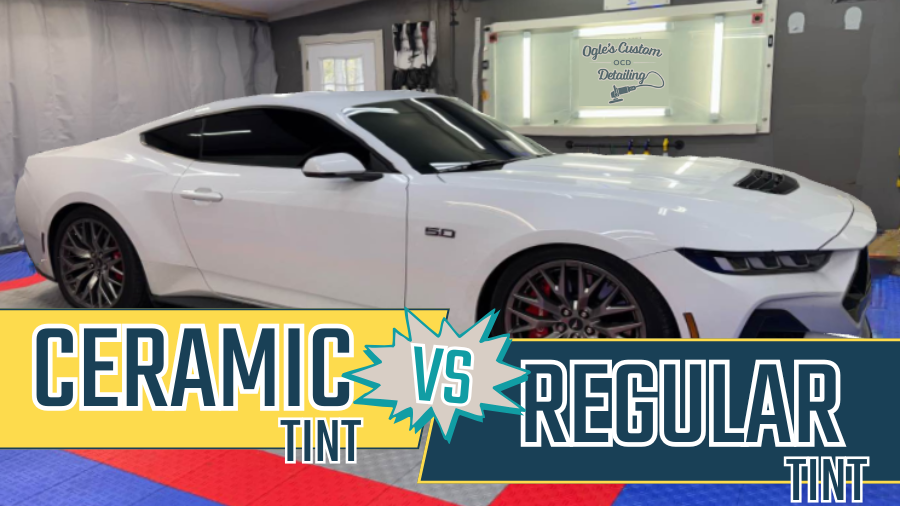Are There Different Types Of Ceramic Tint

Ceramic window tint has rapidly become the gold standard in automotive window films, surpassing traditional dyed and metallic films in both performance and longevity. But the world of ceramic tint isn't a monolith. While all ceramic tints share the core characteristic of using ceramic particles to block heat and UV rays, there are indeed variations in their composition, performance, and application.
The Core Ingredient: Ceramic Particles
At the heart of every ceramic tint lies the ceramic nanoparticle. Typically, these are made of materials like titanium nitride (TiN), tungsten oxide (WO3), or silicon dioxide (SiO2). These particles are incredibly small – measured in nanometers – and dispersed throughout a film's adhesive layer. Their purpose is to absorb and reflect infrared radiation (IR), the primary component of solar heat, as well as to block harmful ultraviolet (UV) rays. The concentration and type of ceramic particles used are key differentiators between different types of ceramic tint.
Variations in Ceramic Particle Composition
While the general principle remains the same, manufacturers employ different ceramic materials and combinations. This affects several key performance metrics:
- Heat Rejection (IRR): Different ceramic materials have varying levels of infrared rejection capabilities. Some formulations may prioritize blocking certain wavelengths of IR light more effectively than others. For example, a tint designed for extremely hot climates might emphasize IRR in the near-infrared spectrum.
- UV Protection: All ceramic tints offer excellent UV protection, typically blocking 99% or more of UVA and UVB rays. However, subtle differences can exist in the UV spectrum coverage based on the specific ceramic compounds used.
- Visible Light Transmission (VLT): VLT refers to the amount of visible light that passes through the film. Ceramic tints are available in a range of VLT percentages, allowing you to choose the level of darkness that suits your needs and complies with local regulations. The ceramic particle density can affect the perceived darkness, even at the same VLT rating.
- Color Stability: High-quality ceramic tints are known for their excellent color stability. However, inferior formulations or cheaper manufacturing processes can lead to fading or discoloration over time. The specific ceramic compounds and the quality of the adhesives used play a crucial role in long-term color retention.
Layering and Manufacturing Techniques
Beyond the ceramic particles themselves, the way the tint is manufactured and layered also contributes to variations. Some manufacturers use a single layer of ceramic-infused film, while others employ multiple layers with varying concentrations of ceramic particles. Multi-layered films can offer enhanced performance and durability, but also come at a higher cost.
The method of applying the ceramic coating to the film also matters. Sputtering, a more advanced technique, deposits a thin, uniform layer of ceramic material onto the film surface. This results in a more consistent and durable product compared to simpler coating methods.
Hybrid Films: Ceramic Infusion with Other Technologies
Some window films are marketed as "ceramic" but are actually hybrid films that combine ceramic particles with other technologies, such as metallic layers or dyed layers. These hybrid films can offer a balance of performance and cost, but they may not provide the same level of heat rejection or clarity as a pure ceramic tint. For example, a film might combine a small amount of ceramic with a spectrally selective film to improve overall performance. Be sure to carefully review the specifications and understand the composition of the film before making a decision.
Choosing the Right Ceramic Tint
Selecting the right ceramic tint for your vehicle depends on your specific needs and priorities. Consider factors such as:
- Climate: In hotter climates, prioritize films with high IRR.
- Privacy: Choose a VLT percentage that provides the desired level of privacy while complying with local laws.
- Budget: Ceramic tints vary in price, with multi-layered films and advanced sputtering techniques typically costing more.
- Aesthetics: Consider the tint's color and how it complements your vehicle's appearance.
Always consult with a reputable window tint installer who can provide expert advice and recommend the best ceramic tint solution for your needs. Request specifications, including IRR, UV rejection, and VLT percentages, to make an informed decision. Remember that quality installation is just as important as the quality of the film itself.
